The South Terrace
Urban ambiance
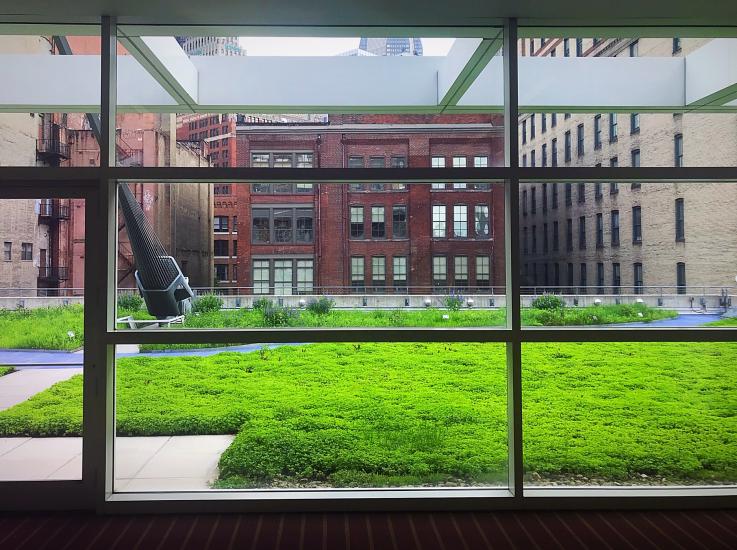

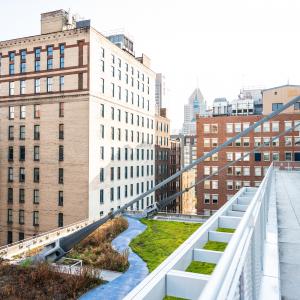
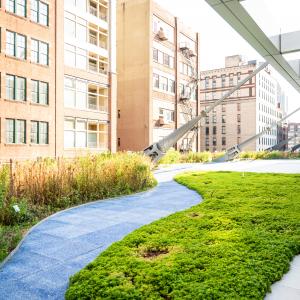
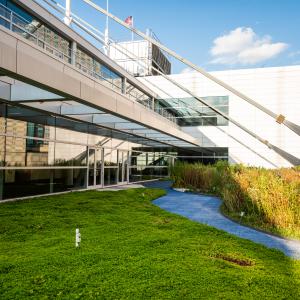
Urban ambiance





Closest to the building is a mixture of low-lying Sedum, often used on vegetated roof systems because of its non-invasive and hardy properties. The meadow along the south railing is made up of different species of Southern Pennsylvania native wildflowers and grasses. Since the plants are native, they are well-adapted to the local climate, thus requiring low maintenance and little watering. Our rooftop garden includes two collections:
Perennial Collection
Sedum Collection
The perennial and Sedum species on the South Terrace remove the equivalent of 255 passenger cars’ worth of carbon dioxide and air pollutants from the atmosphere each year. The growing medium, which supports the plants, acts as a natural rainwater filter, restoring pH and removing hard metals like zinc and copper. By storing and re-evaporating up to 80% of the rainfall during storms, our green roof also reduces the burden on municipal drainage systems and helps to protect water quality.
Studies by the Penn State Center for Green Roof Research have shown green roofs in Pennsylvania's climate retain approximately 50% of rainfall on average. During the summer months, the retention reaches up to 80%. If watering is needed, our green roof uses a high-efficiency drip irrigation system supplied by Pittsburgh's fourth river, an underground aquifer. This system is controlled by a sensor array to provide water only when it is needed, saving over 32,000 gallons of water annually.
The urban heat island effect results in higher demand for energy-intensive air conditioning. By absorbing sunlight and re-humidifying the air, our green roof limits surface heating and reduces the urban heat island effect. Studies by the Penn State Center show that even during the hottest Pittsburgh days, green roofs such as ours remain fifty degrees cooler than conventional roofs. Located on the South Terrace (3,000 sq. ft.), white pavers are made with a high-SRI (Solar Reflectance Index) material which helps reduce the urban heat island effect.
The migration of the monarch butterfly is one of the miracles of nature. Each fall, hundreds of millions of monarchs migrate from the United States and Canada to spend the winter in Central Mexico. In March, they begin their return journey north.
Over the last decade, the monarch population has declined as a result of urban sprawl and herbicide-resistant crops, which have caused habitat loss. To help the monarchs on their journey, the David L. Lawrence Convention Center has established a Monarch Waystation.
Monarch butterflies lay their eggs on milkweed plants. The larvae only eat from the milkweed plant on which they were born. At the end of the larval stage the caterpillar will leave the milkweed plant and search out a good location to spin a pad of silk from the specialized spinneret. The caterpillar will hang like a J shape getting ready for the final molt. Slowly the outer cuticle hardens to form a pupa inside the chrysalis (cocoon) for 8-15 days where the body is transformed into the butterfly. Monarchs typically emerge from the chrysalis in the early morning and dry their wings for several hours before they are ready to fly. The adult butterflies sip on nectar from a variety of flowers.
Summer butterflies live up to 2 months but the last generation, instead of breeding, migrate to the high mountains west of Mexico City where they cluster together on the branches of the oyamel fir tree for the winter. The migrating generation may live up to 9 months, until spring, when the migration starts again.
Monarch populations are currently in deep decline due to a number of factors, including poor weather conditions like cold and drought, loss of habitat, climate change, and pesticide poisoning.
If you would like to help the monarchs, start by planting milkweed, providing native plants for foraging and shelter, removing invasive species and replacing them with native plants, and avoid use of pesticides. Our monarch habitat plants include:
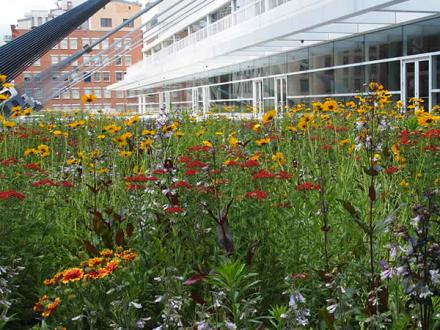
Native Plants
Selected for their ecological benefits and ability to thrive in a rooftop environment, the South Terrace's plants are native or non-invasive adaptive species. The plant collection is made up of perennials and sedums.
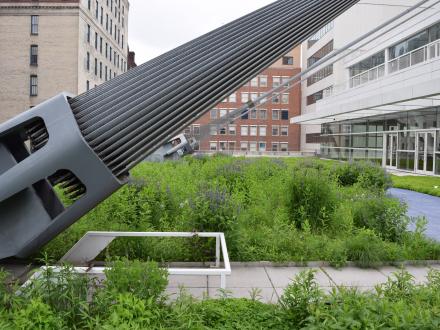
Pollution Control
Based on studies by the US EPA, it is estimated that the South Terrace's green roof will remove 680 pounds of particulate matter pollution from the air annually.
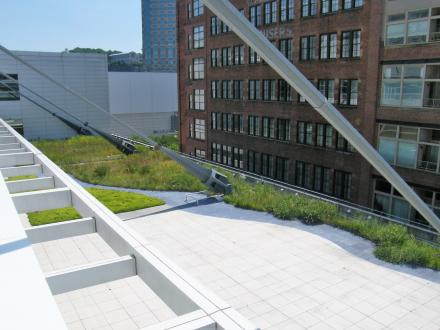
Water Filtration
Retaining rainfall allows for the green roof to self-water.
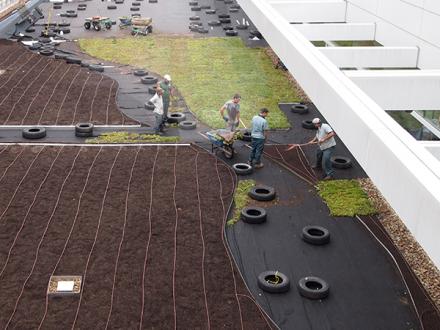
Heat Absorption
Traditional roofs made of dry, impermeable materials such as concrete and asphalt can exceed air temperatures by up to ninety degrees in the summer.
This can cause urban areas to be significantly warmer than neighboring rural areas. This phenomenon is known as the urban heat island effect. Green Roofs provide an alternative.